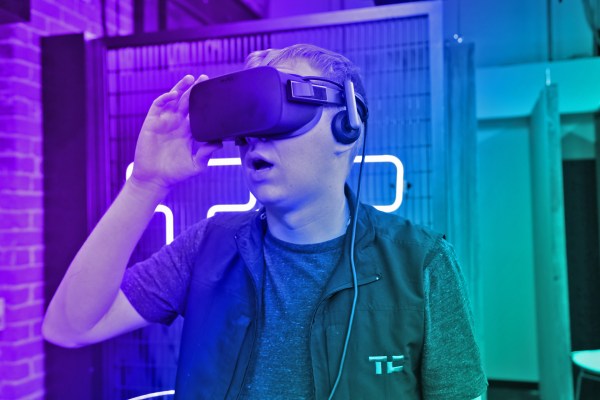“Where am I? And how did I get here?”
Even after months of repeatedly leaping in and out of disparate worlds filled with jaw-dropping (see above) visuals, every time I’ve whipped off one of the various iterations of Oculus’s Rift virtual reality headset, for a brief moment I’ve always had to wonder where exactly the device has taken me and dropped me off.
The Oculus Rift surely might be the most momentous product launch of the decade.
When Oculus was purchased by Facebook for $2 billion back in March of 2014, Mark Zuckerberg reflected on his company’s major investment with a prediction, “Virtual reality was once the dream of science fiction. But the internet was also once a dream, and so were computers and smartphones. The future is coming and we have a chance to build it together.”
The Oculus Rift surely might be the most momentous product launch of the decade.
Fast forward just two years and the virtual reality industry Oculus dwells within has shifted dramatically. Next week HTC will be shipping the final version of their Vive VR headset, PlayStation VR will be shipping later this fall, and a host of well-funded augmented reality companies from Meta to Magic Leap are promising to alter our realities in real-time.
Is reality this overrated or are we all just inhaling too many hype fumes? The Rift certainly means a ton for the industry and, in many ways, the future of consumer technology, but, right now, should you buy it?
Read more about the 5 hard questions facing Oculus Rift
Rift specs
+ Display resolution: 1200×1080 AMOLED (each eye)
+ Display refresh rate: 90Hz
+ Lens spacing adjustment: 58-72mm
+ Headset cable: 4m custom cable
+ Replaceable facial interface
+ Orientation sensors: Gyroscope, accelerometer
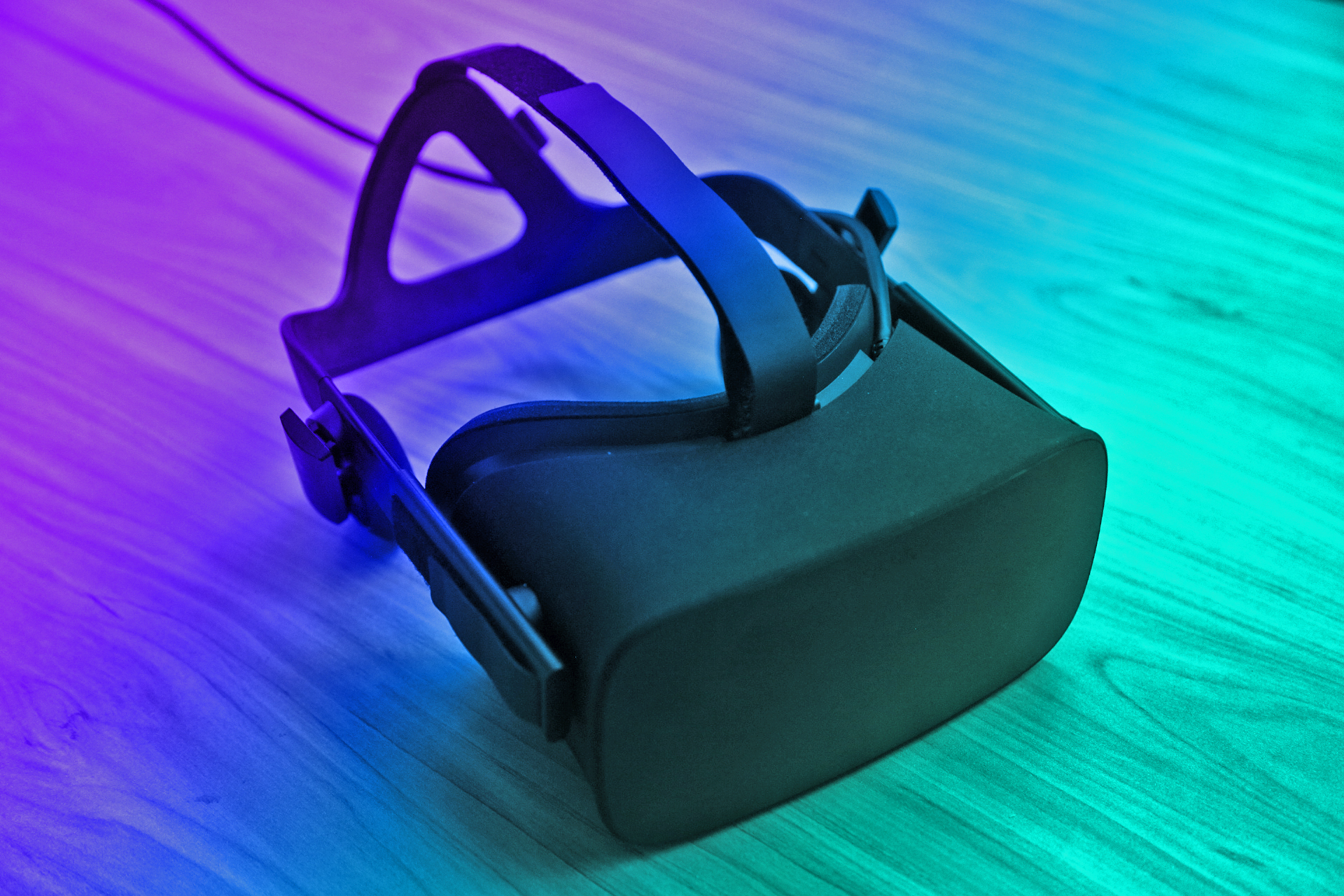
The Oculus Rift retails for $599 and requires a powerful PC to operate. It is currently back-ordered until July.
Immersing yourself
There’s a light feeling of shame when you’re donning a VR headset the first few times. “How did I let it come to this?” I’ve thought. It’s an incredible, geeky technology, but something about strapping the device to your face makes you question whether you’re escaping reality or giving up on it.
Virtual reality has a lot to offer outside of an escape. VR may one day connect everyone across the globe in a utopian socialist wonderland, but today the tech will continue to thrive in offering distinctly human and uniquely three-dimensional entertainment content that’s more engaging (and demanding) than anything we’ve experienced before.
…something about strapping the device to your face makes you question whether you’re escaping reality or giving up on it.
Today, Oculus has detailed that they’re mostly interested in gaming, but the potential use cases of VR expand far beyond that. Thanks to the mobile revolution, we’ve been able to use our smartphones to identify information and interpret experiences in the world around us, but with virtual (and augmented) reality, there’s the potential to let our VR headsets put us in a more cleanly-aligned world that answers the questions before we ask them.
In order to construct so convincing a world, a lot of moving parts need to come together on the hardware and software sides. A number of features contribute to making the Oculus Rift feel like a complete feast for the senses.
Presence isn’t just about the accuracy of what you see. 3D audio strongly contributes to feelings that you are where the Rift shows that you are. The Oculus Rift stands out among other headset manufacturers in that it’s choosing to build headphones enabled with 3D audio into the Rift. The headphones aren’t too bad actually. You can theoretically remove them somewhat easily, but without an audio-in port on the headset itself, you’re left with somewhat cruddy options for connecting your personal headphones otherwise.
Today, Oculus has detailed that they’re mostly interested in gaming, but the potential use cases of VR expand far beyond that.
Despite the fact that I’ve tried hundreds of virtual reality demos in the past few months, my stomach still isn’t iron-clad when it comes to motion sickness. Queasiness can be an issue with VR, especially when your head movements aren’t matching up with the head-tracking. The Rift keeps frame rates high enough (90z) that it isn’t as much of a problem for the platform. Issues only generally came up when I was using the Xbox One controller to move the camera while also peering around.
The display itself has seen dramatic improvements over earlier development kits. If the last time you tried Oculus was on a DK2 (Oculus’s second development kit) then get ready for significantly sharper images.
One thing that you’ll notice right away is that the headset isn’t seamlessly sealed off from the world. I found that the space for the nose in the viewport leaked quite a bit of light in. This was a bummer as it often broke what VR folks call “immersion,” the idea that you’re actually existing in the world you’re viewing. It isn’t all bad, it did make it much easier to eye the notifications on my phone, but I really just wish the problem didn’t exist to begin with.
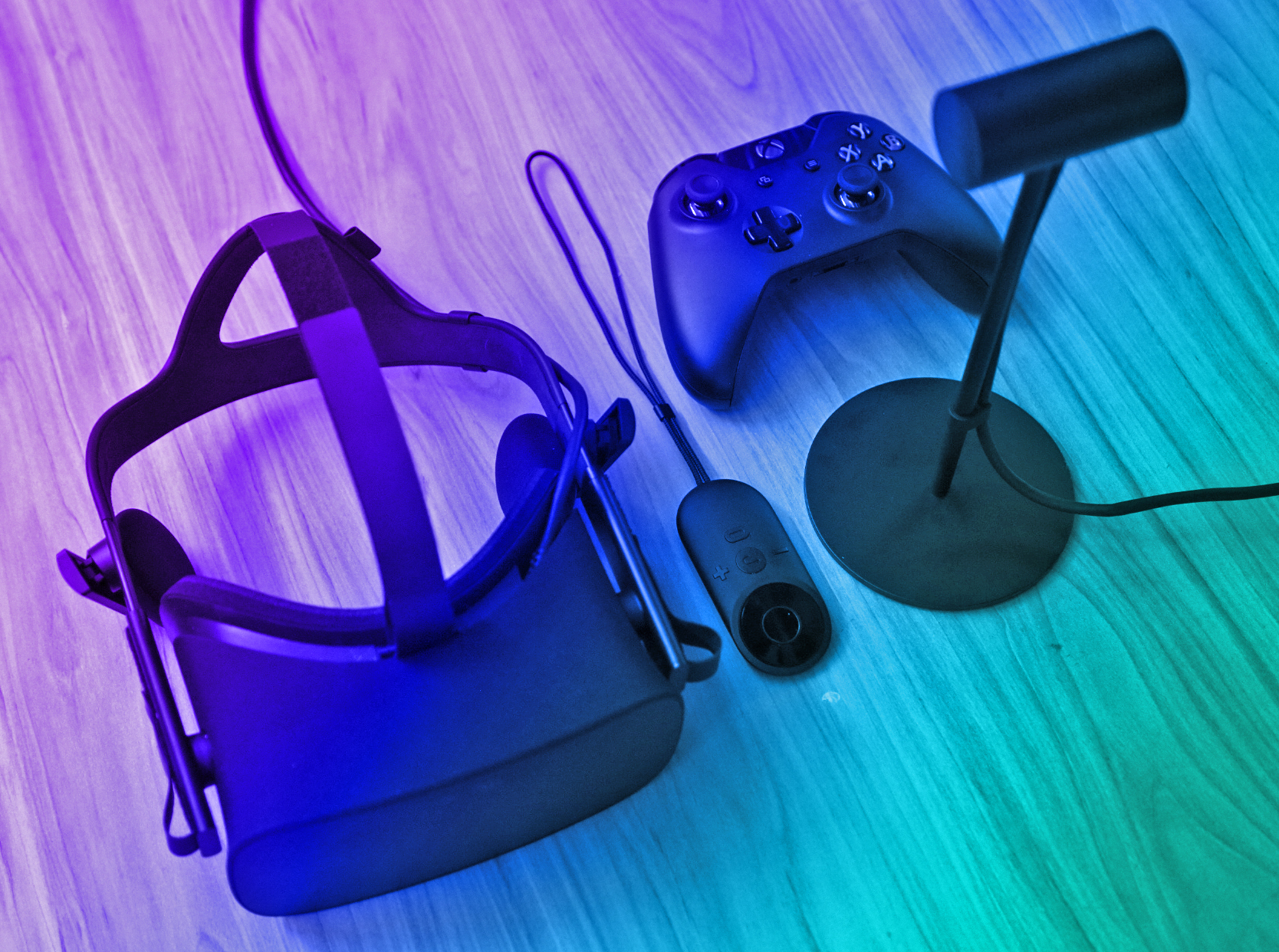
The Oculus Rift and its key included accessories: a wireless Xbox One controller, an infrared camera sensor and a remote control.
Getting prepped
The absolute first thing you must know about the Rift before you buy is that it is indeed a tethered experience. That doesn’t just mean you’re going to have a 12-foot cord following you as you move around, it also means that you’re going to have to own the thing that the cable attaches to, that particular item being a high-powered gaming PC.
I did not have one of those but wanted one and thus began the long, fangled road to sourcing parts and building a virtual reality-ready PC for the TechCrunch office. I enlisted the help of my fellow TC writer Greg Kumparak, which turned out to be a great move because he actually knew what he was doing.
The ideal PC for running a Rift setup will likely run you about $1000. You can likely get one for a bit cheaper if you build your own or buy a pre-built PC in an Oculus-ready Bundle. The listing of recommended specifications for running the Rift are available here.
We decided to go all-in and build a specced-out PC (Nvidia Titan X, Intel i7-6700K) that should be able to handle whatever we throw at it for the next few years. From there, the editorial team decided to convert a storage room in the TechCrunch office into a VR lab — our own little Holodeck. It will house the PC and any VR headsets we can get our hands on, all in a room just big enough to allow for some stand-up-and-move VR experience without constantly bashing into the walls. More on that later.
Once you get past the process of acquiring/building your PC and the Oculus Rift headset itself, the actual setup is really a breeze. I screen shotted my way through the process below in case you’re interested but setting up the sensor/remote/headset and connecting the Xbox One controller with the included dongle only took about five minutes total.
[gallery columns="4" ids="1297828,1297819,1297820,1297821,1297822,1297827,1297823,1297824,1297826"]
Getting the right fit is likely going to be the most confusing part of the process, especially if you’re not accustomed to other VR headsets. The important thing to remember is that things should feel comfortable and not involve too much eyestrain. You’ll likely have to scoot the Rift around on your face a bit before the display is totally clear. You may also have to adjust the interpupillary distance using the toggle on the underside of the device. This adjusts the space in-between the lenses of the Rift.
Clearing the physical space you’re playing in is also pretty key. The Rift’s setup may not compare to the room-scale spaces needed by other VR headsets like the HTC Vive but even when you’re in a swivel chair (definitely the furniture piece of choice here), you’ll still need a good bit of room to avoid falling and breaking stuff.
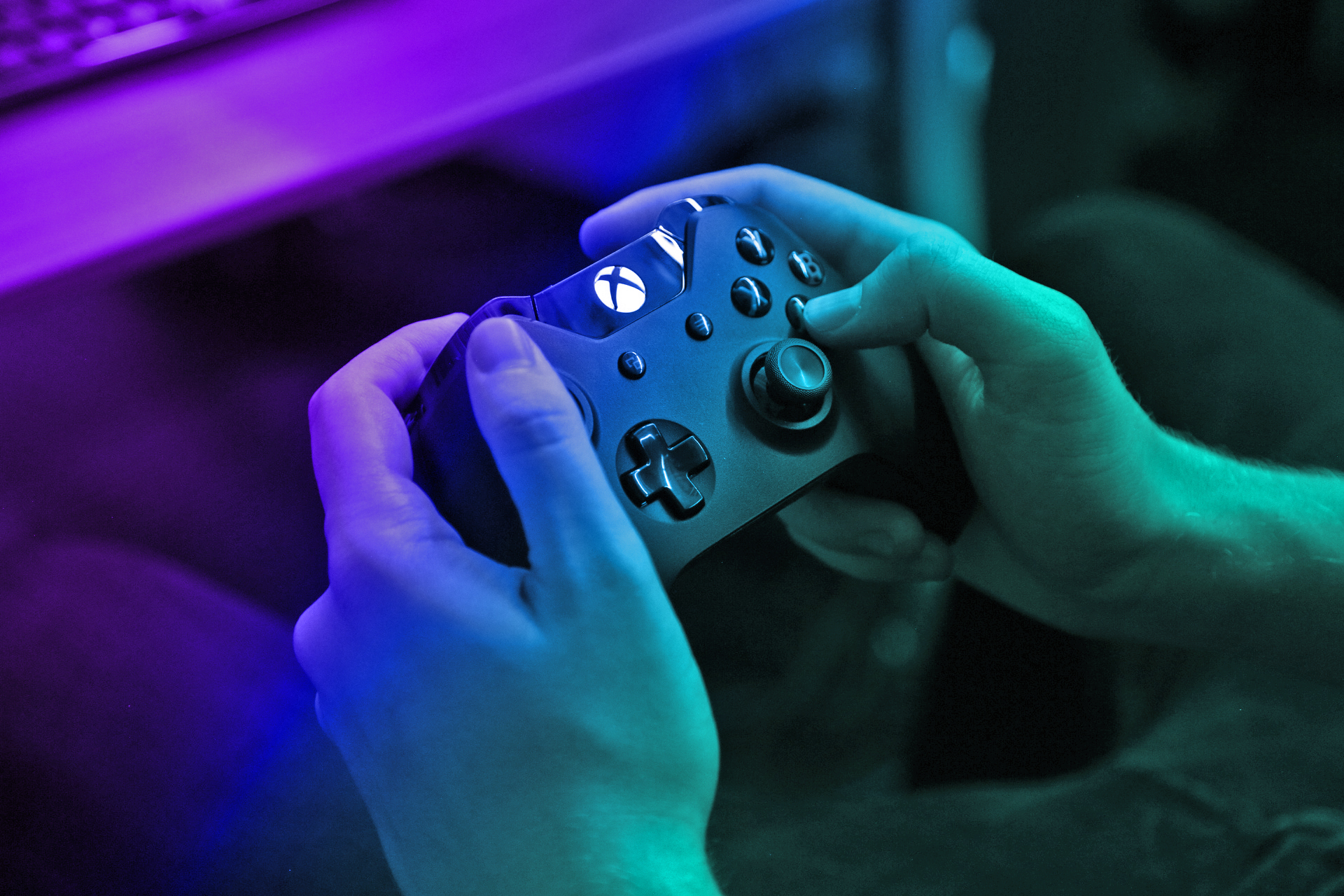
A wireless Xbox One controller ships with the Oculus Rift.
Reaching toward the future
Managing how users interact with their environments is one of the hardest things to nail in virtual reality. People are trying everything in regards to input, but until the technology gets into consumer hands it’s a bit of a fuster cluck discovering what works best.
I’ve tried pure hand-tracking, motion wristbands, tracked VR gloves, wands, finger controllers, smart rings and full body sensor rigs, and I’ll be the first to tell you that they all are awesome and shitty in their own unique ways.
The Xbox One controller included with the Rift, however, is just daringly unimaginative and really restricts the launch potential of the device.
The greatest experience on the Rift is offered by the Oculus Touch controllers, a pair of Wii Nunchuk-style positionally-tracked controllers that are the most ergonomic and intuitive of any input devices I’ve seen thus far. The problem is, the Touch controllers have been delayed and won’t launch until later this year.
The Xbox One controller included with the Rift, however, is just daringly unimaginative and really restricts the launch potential of the device.
The experience is so considerably superior with Touch that I somewhat question why Oculus decided to release the device without them. I grasp that the headset had already been plagued by delays and another one likely would have further perturbed backers, but the experience offered with the Xbox One controller is subpar, especially considering that both the HTC Vive and PSVR will launch with positionally-tracked controllers available.
Regardless, considering that the Oculus is already back-ordered until July, I might recommend waiting it out for the launch of Touch later this year rather if you want the best gameplay experience possible.
Head-tracking on the Rift lets you dive deeper into details in Lucky’s Tale.
Gaming in VR
The launch titles on the Rift are largely just okay. Again, most of the coolest games I’ve demoed is either launching later this year with the Oculus Touch or is being released within the next couple months.
My biggest issue with some of the launch titles is that the VR immersion can occasionally feel like it’s just serving as a gameplay gimmick. “This is cool, but I don’t get why it has to be in VR,” was a common refrain. This is largely due to the Xbox One controller being the input method and restricting users mobility to focus on seated experiences.
Pre-orders of the Rift will include both Lucky’s Tale, a cute little platformer starring an adventurous fox, and EVE Valkyrie, an ambitious multiplayer space dogfighting shooter. Both games are among the top titles available at launch which is a big plus. I was also a big fan of AirMech: Command and ADR1FT.
Check out the full list of launch titles here.
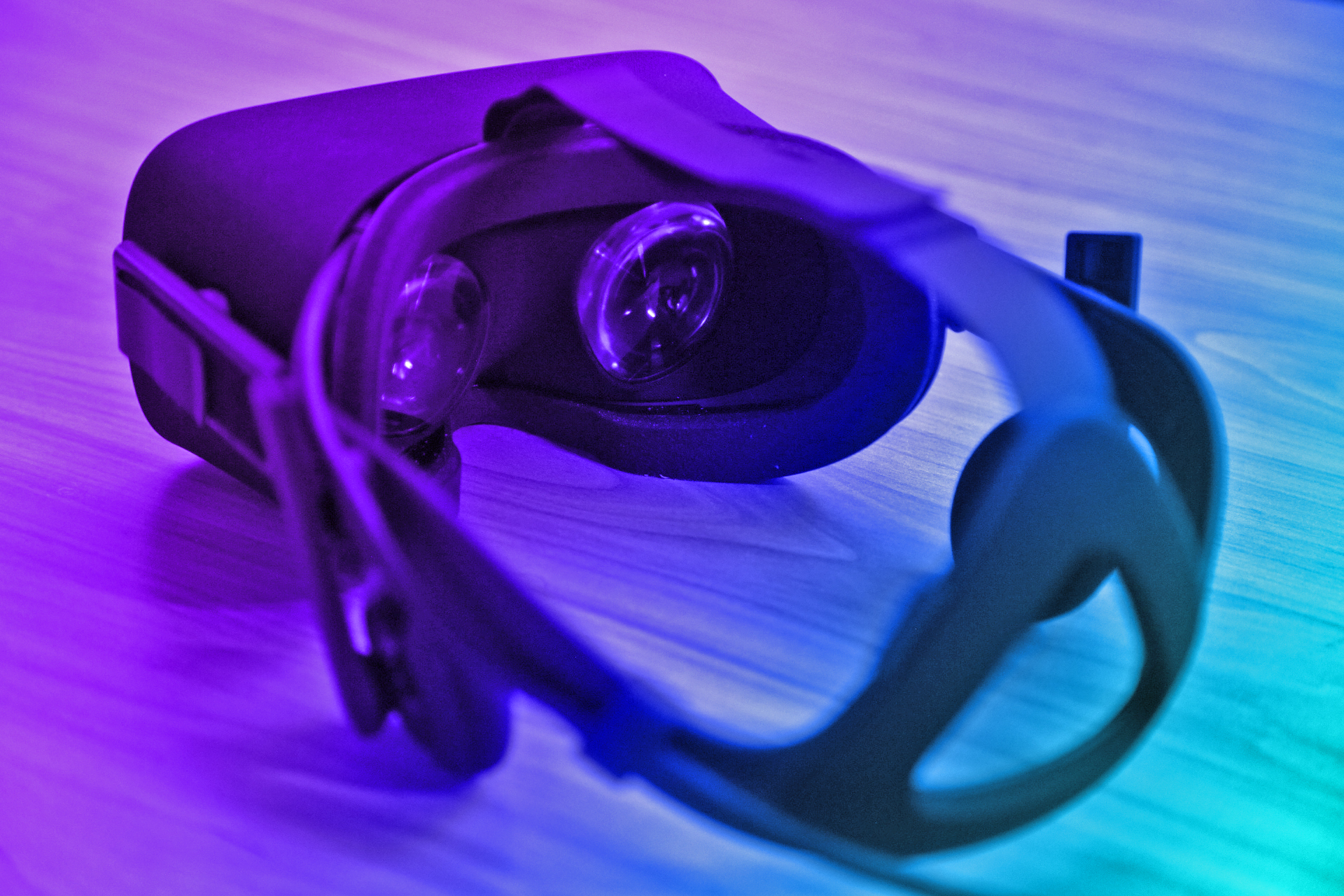
The straps on the Rift can be adjusted for comfort while the distance between the lenses can also be shifted to account for varying IPD numbers.
Most shouldn’t buy, but all should try
For most people, buying the first iteration of a company’s product is a bad call. I have an uncharged Apple Watch on my wrist right now which continually reminds me of this. Some bugs on both the hardware and software side won’t be worked out until the company actually sees how real money-wielding humans beings sit down and interact with their product. Buying a shiny first-gen product in a totally new consumer product category is doubly risky.
This generally holds true for the Rift. Though the hardware experience it offers feels surprisingly refined and well thought out, the broader ecosystem is still a bit of a Wild West. This won’t stop the more adventurous who will likely have no qualms dropping $599 on a shot at the future.
If you’re deciding between the Oculus Rift, HTC Vive and PSVR as your first high-powered virtual reality headset, you need to think about two things: time and money.
Though the hardware experience it offers feels surprisingly refined and well thought out, the broader ecosystem is still a bit of a Wild West.
The launch HTC Vive will undoubtedly offer a better out-of-the-box experience than the launch Oculus Rift thanks to the motion-tracked controllers. I do, however, believe from my experiences that the Oculus Touch controllers are superior to those of the Vive in terms of both ergonomics and utility. If you have patience, Oculus will eventually give a better experience in terms of motion-tracked gameplay.
Also, for better or worse, Oculus is playing the Apple game more than HTC when it comes to the content availability. Oculus Store content is not playable on other systems, though you can download and play Steam content on the Rift. This has pissed a lot of gamers off, but assuming you want the greatest choices when it comes to content, the Rift may be the right choice because of this.
[gallery columns="6" ids="1297683,1297689,1297693,1297691,1297690,1297685,1297686,1297692,1297687,1297679,1297681,1297680,1297697,1297698,1297696,1297695,1297694,1297688"]
When approaching the purchase in terms of money, the decision becomes increasingly more murky. Though the HTC Vive boasts a more expensive $799 price tag, the Rift does not include the Touch controllers and will likely require a second infrared camera sensor to operate. Add all of this together and both of those headsets cost roughly the same, the PSVR on the other hand is a total steal in that everything you need (including the PS4 itself) will run you about the same price as the other headsets which require pricey PCs.
For everyone else who won’t be leaving this article with credit card in-hand to purchase one, do yourself a favor and try one of these out at least. This technology is ambitiously cool and it doesn’t take a ton of mental leaps to imagine this replacing many of our existing communication networks. These headsets will be popping up in Best Buys, at demos across the country and inside your buddy’s game room so be sure to try and get your hands on one just to experience it.
The Oculus Rift is a crazy device that is more than the sum of its parts. As the first consumer high-powered virtual reality headset, it deserves props for just existing, but incredibly it manages to kick ass as well. Whether you should buy now, just try it out or wait until Oculus Touch arrives depends mostly on your patience and cashflow.
The Rift has had an entire industry riding on its back, and more than a handful of skeptics praying for its downfall. It impresses, and signals more good things to come from consumer virtual reality and — more broadly — our technological future.
